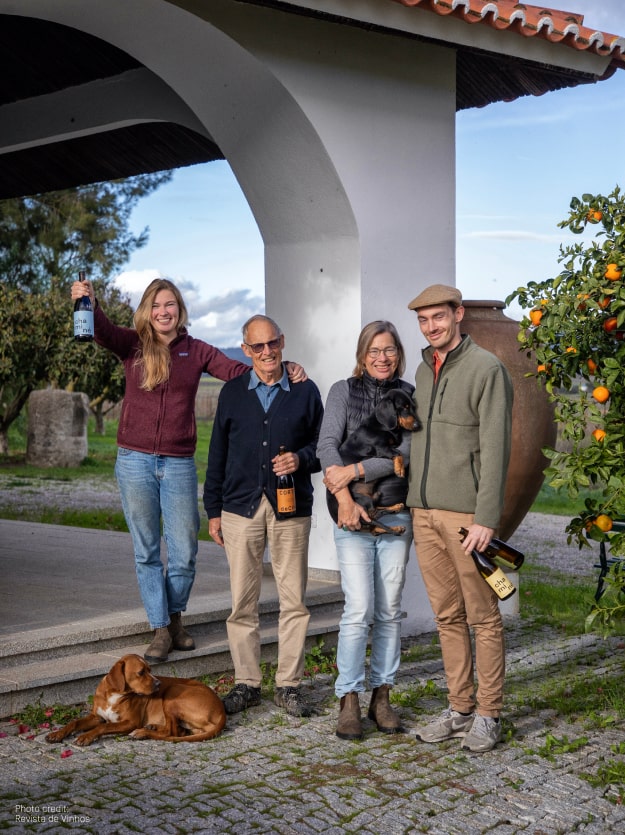About us

Carrie and Hans Jorgensen, a Danish-American couple, arrived in Portugal by sailboat from Malaysia and found Cortes de Cima, a Herdade by the foot of Serra do Meandro, back in the 1980s. At the time, there was just an old Monte with no electricity or running water, a traditional farm with old olives, cereals, and animals. They decided to settle and start a family.
Slowly, the farm grew, first with melons and dried tomatoes, and then with vineyards planted in 1991. They harvested their grapes in 1996, and Cortes de Cima became known for its wine and olive oil.
Due to their success and forward-thinking ideas at the time they became one of the biggest players in the region.
In Cortes de Cima, it's time for the second generation, an evolution.
The page was turned through a shift of focus away from the more conventional and intensive form of farming of the past towards holistic, regenerative, and organic agriculture, a return to the roots of the old farm.
In Cortes de Cima, the aim is to produce quality wine that speaks of place. We are guided by biodynamic farming principles, reviving old traditions, and preserving the genetic diversity and heritage of the region. We are bringing back the animals, embracing polyculture in order to create a healthy ecosystem, a green lung in our beloved Alentejo.
Our goal is to inspire others through the transparency of our words and actions, our commitment to change and our passion for the land.
At the end of the day, life is a constant cycle of change; it’s a journey, not always easy but urgent and achievable, especially if we do it together!
Our four hundred hectares of contiguous land offer us a unique opportunity to apply a holistic approach.
We’ve transitioned from monoculture to polyculture and decreased the total vineyard area from 240 to 64 h vineyards in the Vidigueira and 35h on the coast.
We are no longer just a wine-producing estate. Cortes de Cima is a farm — herdade – that also makes wine.
A
holistic approach to the farm
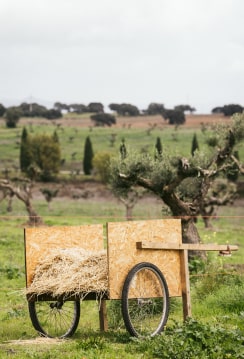
We are exploring our land with Georg Meissner’s biodynamic wisdom, learning regenerative practices and building a living farm with holistic approach.

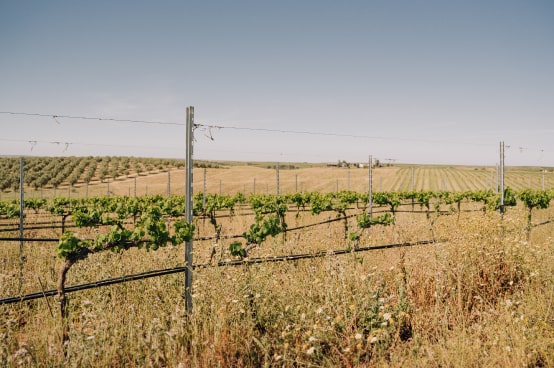
A living soil
We focus on creating a living soil that can naturally support the vines. We enhance its structure through spontaneous and seeded cover crops. We limit tractor passages to prevent compaction and minimize tillage to avoid disrupting life in the top layers. At the end of spring, we roll the cover crop, turning it into a natural blanket that protects the soil from direct sunlight exposure.
The
animals

We’ve reintroduced animals to the farm —
geese, chickens, sheep, donkeys and cows.
We’ve reintroduced animals to the farm —
geese, chickens, sheep, donkeys and cows. We follow a holistic approach, rotating grazing areas to improve the soil quality with their organic matter.
We follow a holistic approach, rotating grazing areas to improve the soil quality with their organic matter. They keep the vegetation grazed while naturally fertilizing the soil, minimizing the need of mechanical or manual weed control and fertilizer input.

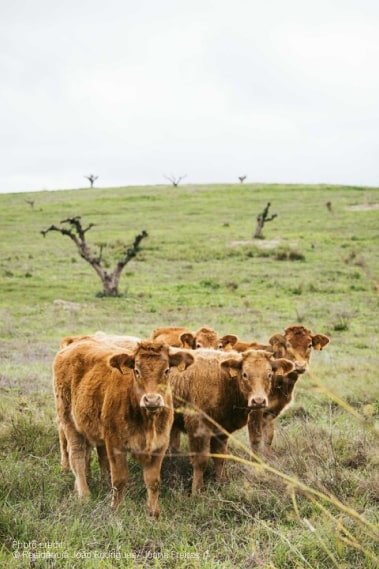

A
green
lung – the
forest
We’ve been reducing our vineyard area, moving from a monoculture-focused conventional farming model towards a polyculture farming system by focusing on the best terroirs.
We are repurposing the newly available land to increase our biodiversity by planting forest and other trees, adding to our existing 60 ha of Montado – the traditional Alentejan forest of cork and holm oak.
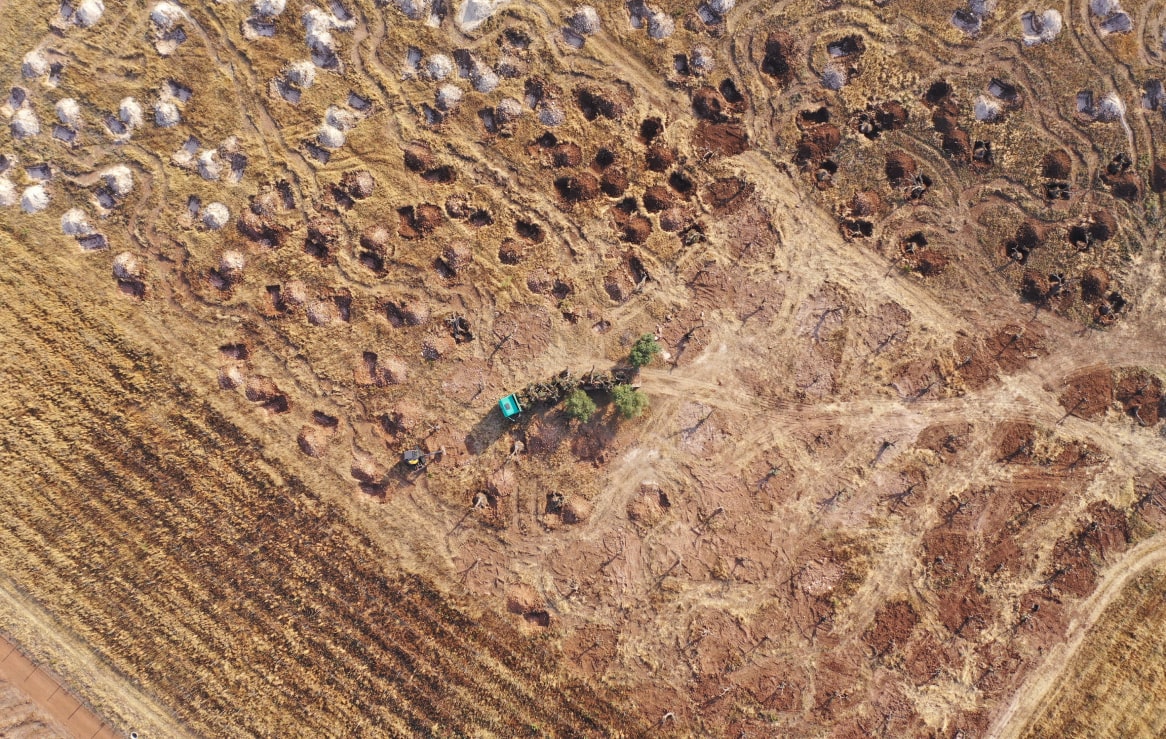
We’ve transplanted and saved 2000 centenarian olive trees from a neighboring property, where they were uprooted and replaced with a super intensive olive plantation. These trees are the essence of the authentic ancestry of Alentejo.
Preserving these trees means safeguarding an unique genetic heritage that is resilient, authentic and more adapted to survival.
The olive trees the forest and the montado allow us to densify watercourses, rehabilitate the soil and create a green lung. This is what we do to prevent desertification in our region. Our drive is to preserve the ancient agricultural traditions of Alentejo and its genetic diversity.We’ve transplanted and saved 2000 centenarian olive trees from a neighboring property, where they were uprooted and replaced with an super intensive olive plantation.
These trees are the essence of the authentic ancestry of Alentejo.
Preserving these means safeguarding a unique genetic heritage that is more adapted to survival, resilient, and authentic.
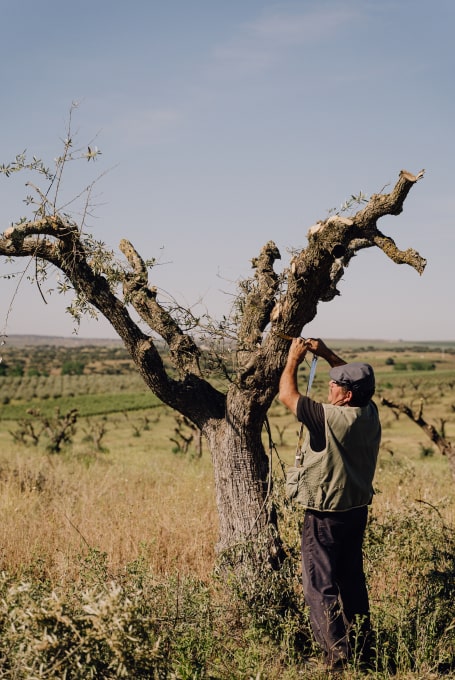
Our four hundred hectares of contiguous land offer us a unique opportunity to apply a holistic approach.
Study
our soils

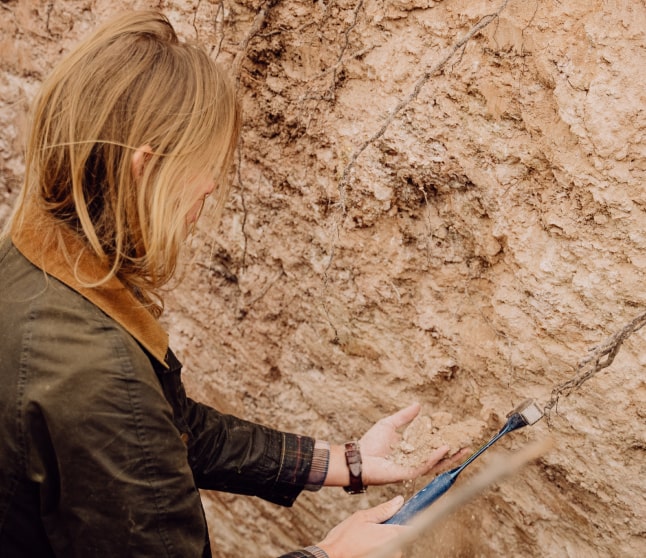
With renowned terroir expert Pedro Parra, we have developed an in-depth study of the soil at our estate. Through the help of electromagnetic (EM) conductivity mapping and numerous soil pits, we have gained a detailed understanding of our soils and the wines they originate.
This knowledge has guided our reduction of vineyard area, focusing on the vineyards with the highest quality potential and the ability for the resulting wines to express their terroir. As well as from a sustainability point of view, selecting the soils that rely on the least amount of external inputs, with higher water holding capacity, better natural fertility and the ability for the roots go deep and feed in the cracks of the mother rock.
Our estate in Vidigueira is divided between two mother rocks, limestone and granite, with varying amounts of clay.
At the same time, our coastal vineyards in Vila Nova de Milfontes are planted in sandy, silty gravels.
This knowledge has guided our reduction of vineyard area, focusing on the vineyards with the highest quality potential and the ability for the resulting wines to express their terroir as well as a sustainability point of view, selecting the soils that rely on the least amount of external inputs, with higher water holding capacity, better natural fertility and the ability for the roots go deep and feed in the cracks of the mother rock.
With renowned terroir expert Pedro Parra, we have developed an in-depth study of the soil at our estate. Through the help of electromagnetic (EM) conductivity mapping and numerous soil pits, we have gained a detailed understanding of our soils and the wines they originate.

REVIVE OLD AND INDIGENOUS VINES
We want to open a new chapter for us, working with the old genetic material that has developed over centuries in this place and as such, will be better adapted to our climatic conditions.
Preserving genetic diversity will bring resilience and greater identity to our wines.
Pruning is a craft made by the caregiving hands of our team.
Respect the vine
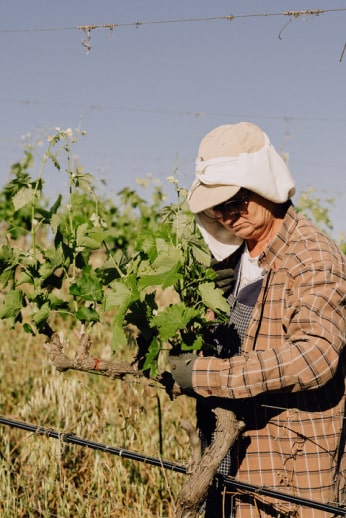
We are learning with the master pruner, Marco Simmonit – to respect the vine and its natural architecture and vascular flow.
A new manual and respectful pruning approach fosters a harmonious and personal connection between the vine and the caretaker. The grapevine is a climber and enjoys growing. Therefore, pruning must allow its natural inclination to be fulfilled. This is what our team has learned, and now keep practicing.
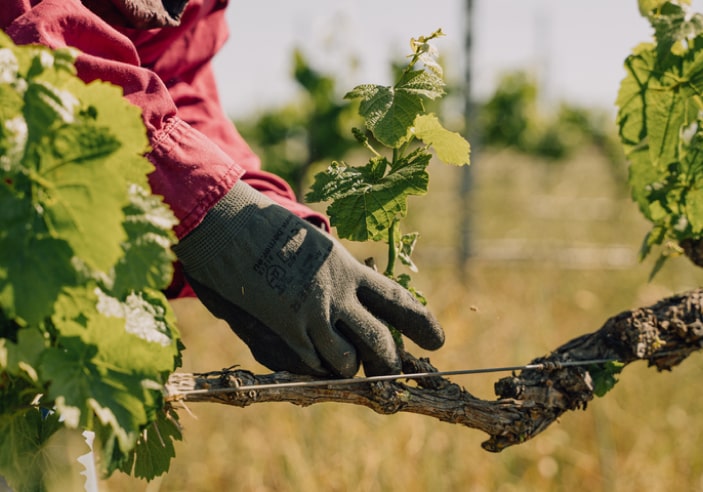
Explore
our wines and
olive oil
